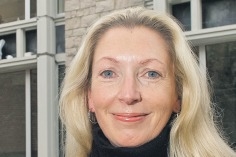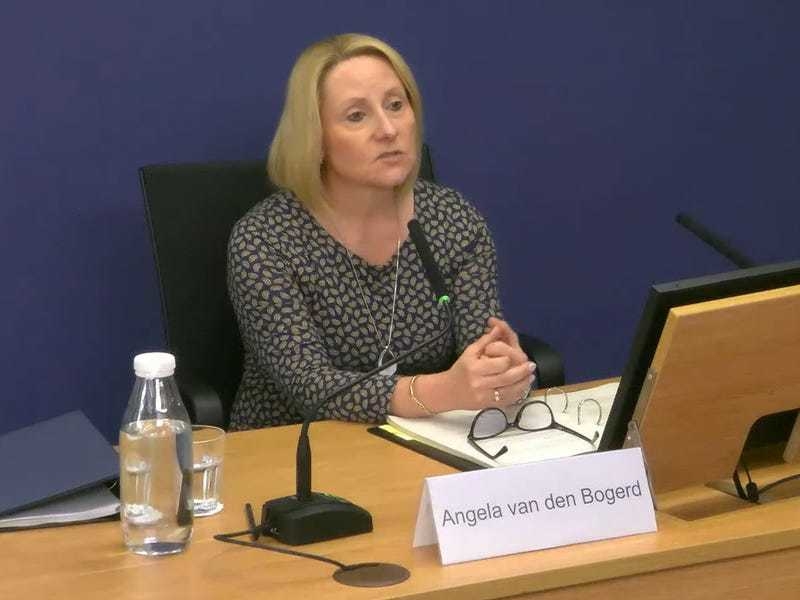Sponsored Content
As millions of people around the world prepare to switch off their lights for Earth Hour, James Jeune asked Association of Jersey Architects president Alison Horton how the built environment could aid the fight against climate change
AROUND 16 years ago in Sydney, Australia, more than two million individuals and 2,000 businesses decided to switch off their lights for an hour. Their message was simple – to show they cared about the planet and that small actions, united, can ultimately make a big difference.
And what was started by the World Wildlife Fund out of frustration – over a lack of action to tackle climate change and protect nature – has since become one of the world’s biggest grassroots environmental movements, with more than 190 countries participating in switch-off events and activities each year.
But is Earth Hour purely symbolic?
‘It’s a really good thing in terms of making people think about what they can do around energy and saving electricity,’ Alison said.
With increasing awareness around the need to reduce energy consumption, the architect was quick to point out that eco-friendly building practices should not be overlooked when it comes to saving power.
One such method, she explained, was the ‘fabric first’ approach, which means carefully considering the efficiency of the materials that make up a building before designing the mechanical or electrical systems it uses.
By seeking to maximise the performance of a building’s fabric first, a developer can potentially reduce capital and operational costs, improve energy efficiency and reduce carbon-emissions.
Adopted successfully, this approach could not only mean that occupants are required to do less to be energy-efficient but could even reduce a building’s need for maintenance.
This, Alison said, warrants the attention given to the ‘easy wins’ of switching from gas to electricity or installing low-energy systems such as heat pumps to reduce a household’s carbon footprint.
And while the idea of a low-energy home may have sounded unrealistic to those taking part in the inauguaral Earth Hour in 2007, it is a concept that is starting to appear more frequently on the Island’s planning register.
In October, the Jersey Development Company revealed revised plans for its scheme to redevelop the former Government of Jersey’s offices at South Hill.
The company claimed the proposed 145 new homes would be ‘some of the most sustainable, low-energy in-use homes in Jersey’, while planted balconies, green roofs and gardens would maximise residents’ connection to nature.
Are new developments the solution then? Well, not exactly.
As Alison noted, an estimated 80% of the UK’s housing stock that will exist in 2050 has already been built.
‘So actually new buildings are only a tiny part of this,’ she explained.
‘It’s the retrofit that is the big thing people are going to have to come to terms with and that’s quite complicated. That’s basically about insulating older buildings and making them more energy efficient.’
Retrofitting, or modifying an existing building in way that might reduce its energy demand or improve efficiency, is often seen with older commercial properties seeking to lower their operational costs or attract new tenants.
In 2015, engineering, strategic and environmental consultancy Ricardo-AEA produced a report to the States about retrofitting energy efficiency in the ‘able-to-pay domestic sector’.
The report concluded that there wasn’t a substantial market for retrofit work on the Island.
‘Perhaps people don’t really know the benefits of insulation work, and therefore don’t see it as cost-effective,’ the document stated.
Alison acknowledged that retrofitting often meant adding insulation internally ‘which is very disruptive to households and really expensive’.
‘There are simple things you can do like draughtstripping your windows and insulating your roof, but what everyone is going to have to start doing is retrofitting their buildings to be more efficient [thermally],’ she continued.
This, perhaps, could present a dilemma in an island like Jersey where space is extremely limited and many buildings are subject to stringent heritage protections and planning regulations.
However, the government’s heritage strategy – published in May last year – included a project goal to ‘demonstrate how historic buildings can be adapted and retrofitted to improve energy and thermal performance’.
‘The heritage sector will have a key role to play in this strategy by reducing its own carbon footprint across all sectors of its business activities including procurement.
‘It will also need to demonstrate the value of retaining and refurbishing heritage buildings for new uses as well as illustrating how sensitive adaptation can improve thermal performance without compromising historic significance,’ the strategy states.
Indeed, Alison contended that retrofitting older properties would be ‘no trickier than everywhere else’.
‘It can be done,’ she continued. ‘Everything has to be really thought out and no house has got quite the same details as another so it is really difficult – and you are also making the houses slightly smaller because of the insulation you are adding.
‘Retrofit is almost like the elephant in the room at the moment because no one is really trying to deal with it.’
The movement is growing, however, with researchers at the UK’s IPPR think tank last year claiming that retrofitting homes could create millions of jobs and knock hundreds of pounds off household bills.
Business coalition the Energy Efficiency Infrastructure Group also wrote to former Chancellor of the Exchequer Kwasi Kwarteng, urging him to invest £5 billion more to insulate UK buildings.
Praise from the WWF
In 2009, Jersey received praise from the WWF for backing Earth Hour, which has previously seen lights switched off at Island landmarks such as Mont Orgueil and Elizabeth Castle.






